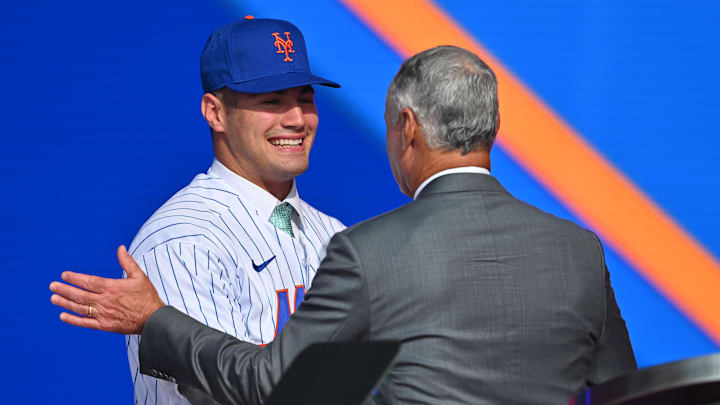First reason for optimism: Parada performed well before being promoted to AA.
Scouts that evaluate minor league talent have changed their tune on the level of competition at each level. In the past, being promoted from AA to AAA was considered the largest jump because the competition was predominantly for players with big-league experience and top prospects on the precipice of becoming major leaguers. In 2023, top prospects across the minor leagues played very few, if any, games at AAA before being promoted to the majors. Former big leaguers also struggled mightily at the AAA level because of the new automated strike zone, thus Joey Lucchesi having a near 5 ERA in the minors but a sub-3 ERA for the Mets.
The new largest gap in competition is the leap from High-A to AA. This is where most top prospects now reside, including last season for the Mets. Before his promotion, Parada was just starting to find his offensive rhythm in pitcher-friendly Brooklyn. In 25 games in May, Parada hit .269 with 2 home runs and 11 RBI, including 9 doubles. He continued this momentum through 22 games in June where he hit .303 with 5 home runs and 15 RBI.
After a solid July, Parada was unfortunately sidelined with a right ankle sprain. Upon returning, he would only play 5 more games in Brooklyn before being promoted to Binghamton to help in their pursuit of the Eastern League postseason. For Parada to make the most significant jump in competition upon returning from a rehab assignment could be the reason for his struggles through 14 AA appearances. With full spring training under his belt, Parada will be placed in a better situation to succeed at this level in 2024.
Kevin Parada steps into the cage: pic.twitter.com/HXNbDnZ84E
— SNY Mets (@SNY_Mets) February 13, 2024
